#Saiga Conservation
Explore tagged Tumblr posts
Text
youtube
The Remarkable Saiga Antelope Unveiled
Discover the unique world of the Saiga Antelope! From its extraordinary nose to its incredible migration, this species captivates. Learn more about this ecological marvel!
Check out my other videos here: Animal Kingdom Animal Facts Animal Education
#Helpful Tips#Wild Wow Facts#Saiga Antelope#Wildlife Conservation#Endangered Species#Animal Facts#Saiga Habitat#Saiga Antelope Facts#Wildlife Education#Animal Kingdom#Nature Conservation#Animal Behavior#Conservation Tips#Wildlife Protection#Interesting Animal Facts#Saiga Antelope Behavior#Rare Animals#Environmental Education#Wildlife Awareness#Animal Enthusiasts#Nature Wonders#Educational Resources#Saiga Conservation#Wildlife Facts#Animal Science#Saiga Migration#Wildlife Habitats#youtube#animal education#animal habitats
0 notes
Text
The World is Amazing, Actually (Part 11 or 12, I lost count)
It's been awhile since I made a post about how fucking rad the world actually is, and amidst all the pandemics and climate change and economic troubles, I felt the need.
So:
Today’s Wild Place (The Earth is An Alien Planet):
The Danakil Depression, Ethiopia:

The Danakil Depression is probably the closest you'll ever be able to come to standing on the surface of Venus (without the crushing atmosphere, of course). Choking sulphuric acid and chlorine gases fill the air, while acid ponds and geysers pepper the landscape.
- Daisy Dobrijevic, published July 4, 2022
(BTW scientists recently discovered microbes capable of surviving in this toxic, extremely hot environment, which means...well, even if we kick the bucket, life will continue. There's something comforting in knowing that no matter how bad we screw up...life will go on.)
Today’s Incredible Feat of Engineering (look! at what! we made!):
Ouarzazate Solar Power Station in Morocco, which has gone solar in a big way.


(Which means they are making a huge contribution to helping fight toxic pollution, noise pollution, water use, land destruction, and carbon emissions. No really, there are charts. Reducing carbon emissions charts. Reducing irresponsible land use charts. Charts! Graphs! Data samples!)
Today’s Cool Life Form (the rare, the weird, the beautiful):
The Hispaniolan Solenodon.
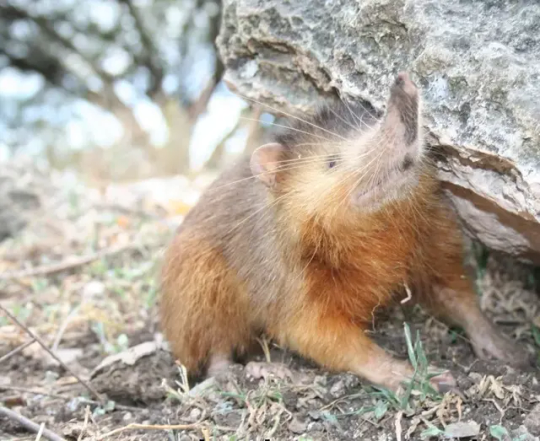
A very rare, nocturnal, shrew-like creature that is one of the few mammals able to produce venom. Look at him! Look at his snout! He's just a little guy! He will bite you and run away on his back legs! He's rare, and endangered, but not gone! Not gone yet, bitches!
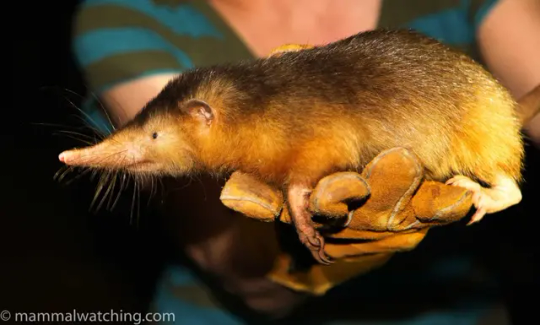
(Bonus: 10 Fun Facts About the Solenodon)
Today’s Bizarre Mystery (no, seriously, wtf?):
The Great Unconformity.
Hey, remember the Grand Canyon? Remember how we can see the passage of time through each layer, going back hundreds of thousands of years?

Did you know that apparently, on this massive record of earth's geological history, there's a chunk of time missing? Science has some hypotheses about how and why this happens (and yes, it's been found in more than one place), but they are really only hypotheses, and no one's really sure what happened to, oh, 1.6 billion years, give or take.
Today’s Act of Humanity (yes, we are worth the effort):
After fleeing a war, Ukrainians rush to help Mississippi tornado victims.

"They made the 16-hour drive south to donate bottled water and volunteer with aid workers, buoyed by the idea that they could help a community facing a similar struggle to theirs.
“We had to leave our home,” Pavliuk told The Washington Post in Ukrainian, in an interview interpreted by Hrebenyk. “And they don’t have a place to go back, either.”"
NEW CATEGORY:
Today's Good News About The Future (No, It's Not Too Late and Anyone Who Says Otherwise is Selling Something):
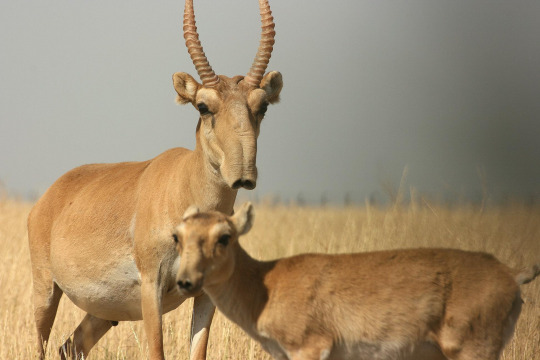
The Saiga Antelope, a species critical to the continued survival of huge swathes of grassland, that in 2003 was down to 6% of it's population and already extinct in it's natural habitat of China and Ukraine, has rebounded back to almost 2 million strong thanks to conservation efforts.
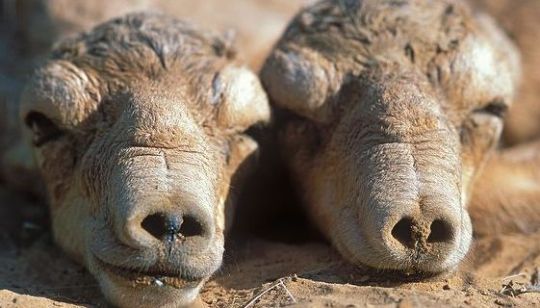
Previous | Next
#the world is amazing#planet earth#nature#good news#animals#danakil depression#Ouarzazate Solar Power Station#morocco#Hispaniolan Solenodon#little creature#saiga antelope#climate change#climate conservation#hope#ukraine immigrants#people are okay#mississippi tornado#look for the helpers#I'm so tired of being worried about the world#but it's not all bad
315 notes
·
View notes
Text
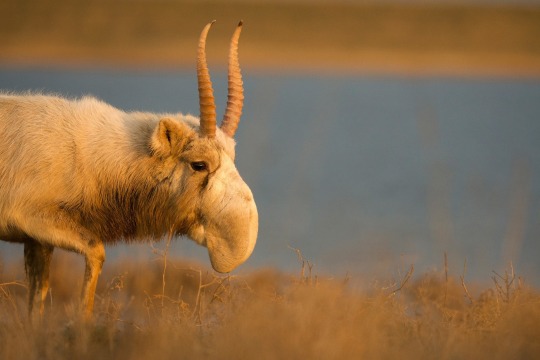
A Male Saiga Antelope in Russia's Black Land National Park. These highly social antelope live in herds. Photograph By Valeriy Malee/Nature Picture Library
This Floppy-Nosed Antelope Was Nearly Gone. 20 Years Later, It’s Thriving.
Less than a decade ago, more than half of the world’s saiga antelope were lost to a mysterious disease. Its comeback is a rare and phenomenal conservation success.
— By Jason Bittel | December 14, 2023
Just two decades ago, it seemed as if we might need to write a eulogy for the saiga antelope.
Cut down by widespread poaching and waves of disease, by 2003, just 6 percent of the floppy-nosed ungulates remained in Kazakhstan, Mongolia, Russia, and Uzbekistan.
But today, scientists are rejoicing at the saiga’s unlikely rebound.
There are now 1.9 million saiga antelope across Eurasia, according to the most recent estimates released this week. So many saiga, in fact, that the International Union for Conservation of Nature is upgrading the Red List status for the species from critically endangered to near threatened.
“There's a lot of conservation doom and gloom, and there isn't very much attention paid to conservation successes,” says E.J. Milner-Gulland, a conservation scientist at the University of Oxford and co-founder of the U.K-based Saiga Conservation Alliance. “It’s quite a vindication of 20 years of hard work by lots of people.”
To get a sense of just how far this species has come, in 2015, more than half of the worldwide population of saiga antelope were lost to a mysterious blood disease.
“This is phenomenal news,” says Joel Berger, an ecologist at Colorado State University and a senior scientist at the Wildlife Conservation Society, in an email.
“At a time when so many species and populations are in deep swan dives, to witness the recovery of saiga—a species deserving of more recognition in its own right—is something we all need to celebrate,” he says.
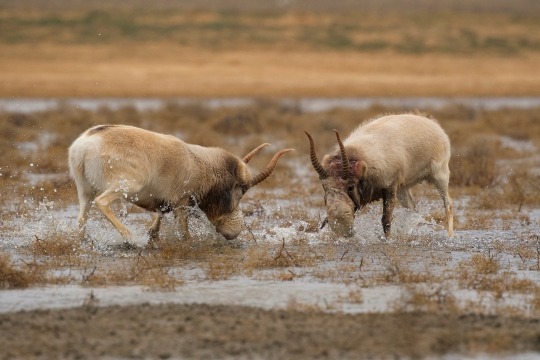
Male Saiga Antelope Battle in Black Lands National Park. Males and their horns are a specific target of poachers. Photograph By Valeriy Malee/Nature Picture Library
The Saiga’s Downward Spiral
Those who have been paying attention to the saiga’s saga know that it’s been a wild ride.
“Twenty years ago, it had the fastest increase in threat status of any mammal,” says Milner-Gulland. “The population had plummeted by more than 90 percent over a really short time of a few years, so it went straight in at critically endangered.”
As for what happened, Milner-Gulland explains that the saiga’s downfall can be attributed to several factors. For starters, saiga horn has great value in China, Singapore, Vietnam, and Malaysia as a component in traditional medicine. And this demand, coupled with the breakup of the Soviet Union, led to a dramatic rise in hunting.
It’s a Symbol of the Wild Steppe, of Independence and Freedom.
— E.J. Milner-Gulland, Conservation Scientist at the University of Oxford
“The economies of these countries basically collapsed,” she says. “And they were living in very harsh conditions on the steppe. So they turned to poaching.”
Fencing along the border between Kazakhstan and Uzbekistan also put a barrier in the middle of the saiga’s migratory route, while infrastructure development cut into saiga habitat. Finally, an unknown trigger turned a naturally occurring microbe in the saiga’s characteristic nose into a virulent pathogen, leading to the mass die-offs.
It’s for all these reasons that the IUCN has chosen not to de-list the saiga completely.
“The near threatened category is right for the saiga, because we know that at any time, we could just get large numbers of them dropping dead again,” says Milner-Gulland. “They are very vulnerable.”
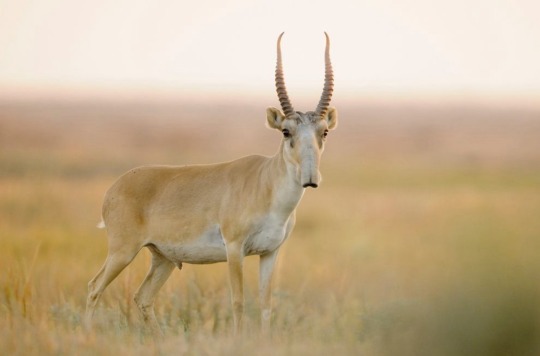
A Path to Recovery
Just as the threats to the saiga were multi-faceted, so too have been the efforts to protect the species, which are important seed dispersers and grazers that contribute to plant biodiversity.
For instance, an international collaboration between countries where saigas roam, countries that traditionally consume saiga products, and other stakeholder nations, including the United States, led to a memorandum of understanding in 2006 to conserve the species, restore its habitat, and restrict harvest to a sustainable level.
For its part, Kazakhstan’s government focused on stronger anti-poaching measures, including law enforcement to prevent saiga hunting. The Saiga Conservation Alliance supplied financing for gasoline, uniforms, motorbikes, and shelters for those rangers, who live in the harsh, windswept grasslands. Customs agents also improved detection of saiga products leaving the country as part of the illicit wildlife trade. Lastly, the country designated multiple protected areas totaling more than 12 million acres of saiga antelope habitat.
Now that economic conditions have leveled out and local people don’t have to choose between their own survival and saving saiga, there has also been a dramatic shift in support for the species.
“The thing about saiga is the local people really love it,” says Milner-Gulland. “It’s a symbol of the wild steppe, of independence and freedom.”
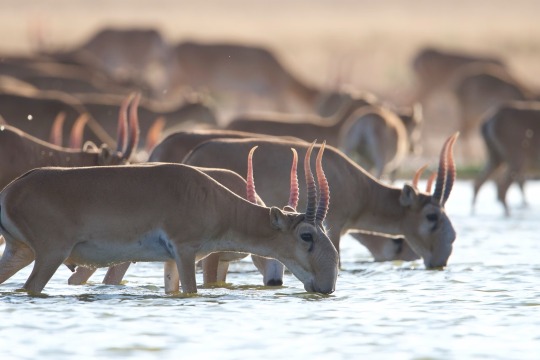
Saiga (Drinking on Southern Russia's Astrakhan Steppe) can migrate up to 600 miles over summer and winter. Photograph By Valeriy Malee/Nature Picture Library
#Animals 🦓 🦒 🐘#Floppy Nosed Antelope#Kazakhstan 🇰🇿 | Mongolia 🇲🇳 | Russia 🇷🇺 | Uzbekistan 🇺🇿#University of Oxford#Saiga Antelope#China 🇨🇳 | Singapore 🇸🇬 | Vietnam 🇻🇳 | Malaysia 🇲🇾#E.J. Milner-Gulland | Conservation Scientist | University of Oxford
44 notes
·
View notes
Text
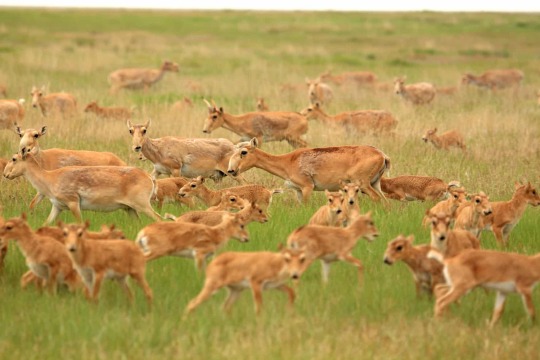
Saiga antelope in Kazakhstan. Albert Salemgareyev will conduct research to better understand and resolve rising conflict between saiga and local herders over dwindling water resources, in a country at risk of water scarcity within a decade
Albert Salemgareyev | Building trust in data: finding solutions for saiga antelope and people in west Kazakhstan
Photograph: 2023 Whitley awards

Saiga in Kazakhstan
#whitley awards#photographer#saiga antelope#antelope#anima#mammal#wildlife#kazakhstan#albert salemgareyev#nature#conservation
42 notes
·
View notes
Text
What animals is everyone trying to donate money towards saving these days ^_^
10 notes
·
View notes
Text

Following the collapse of the Soviet Union, unchecked poaching caused saiga antelope numbers to plummet. From an estimated one million, to fewer than 40,000 by 2005.
The Kazakh government started major conservation measures in 2006 and, despite setbacks from disease outbreaks, millions of saiga now roam the steppes of central Asia again. In 2023 the IUCN relisted them from critically endangered to near threatened.
1 note
·
View note
Text

What's Behind the Saiga Antelope's CRAZY Nose? 🦌
Discover the fascinating secrets of the Saiga Antelope's extraordinary nose! 🦌 This animated video delves into how this unique feature helps the Saiga survive the harsh conditions of the Eurasian steppes. Learn about its role in filtering dust, warming cold air, and even amplifying mating calls. Perfect for young explorers and wildlife enthusiasts eager to uncover the wonders of nature.
#childhood#Saiga Antelope#Saiga nose adaptation#wildlife conservation#animal adaptations#educational animal videos#youtube#children#kidsinspiration#animals video#animation#animated#animal#kids#kids animation#animated gif#Eurasian steppe wildlife#endangered species#nature documentaries#unique animal features#kids wildlife education#SaigaAntelope#WildlifeWonders#NatureEducation#AnimalAdaptations#ConservationMatters#EducationalVideos#UniqueWildlife
0 notes
Text
In an inspiring return 200 years in the making, the last truly wild horse species has been reintroduced onto the open steppes of Kazakhstan.
The Guardian reports that four mares from a breeding program in Berlin and a stallion and two other mares from Prague, were flown to the Central Asian country to mark the second successful reintroduction of Przewalski’s horse to the lands that above all others are associated with this beloved animal.
At an unspecified place on the Eurasian Steppe around 6,000 years ago, of which Kazakhstan is a major component, human beings domesticated the horse. It changed history forever...
In 2011, Prague Zoo was also involved in a reintroduction of Przewalski’s horses to Mongolia which continued for 8 years until the population stabilized. There are now 1,500 such horses in the country.
The Kazakhstan reintroduction comes on the back of several environmental success stories driven by a passionate environmental movement in the country. This has included the reintroduction of Bukhara deer around the shores of Lake Balkhash, and the continued legislative and conservation efforts to restore the majestic saiga antelope, which have resulted in a growth of the population to 1.9 million.
-via Good News Network, June 12, 2024
#horse#horses#przewalski's horse#endangered species#conservation#biodiversity#rewilding#kazakhstan#central asia#steppes#good news#hope
1K notes
·
View notes
Text
I had to fact-check this, and its true!
"This rare triumph is thanks to significant conservation efforts over two decades, which have seen the remarkable recovery of Saiga populations in Kazakhstan from a perilous low in 2005 of just 39,000 to today’s estimated population of nearly 2 million. There has been a considerable effort to restore the population by the Kazakh and other range state governments, research organisations, national and international NGOs"
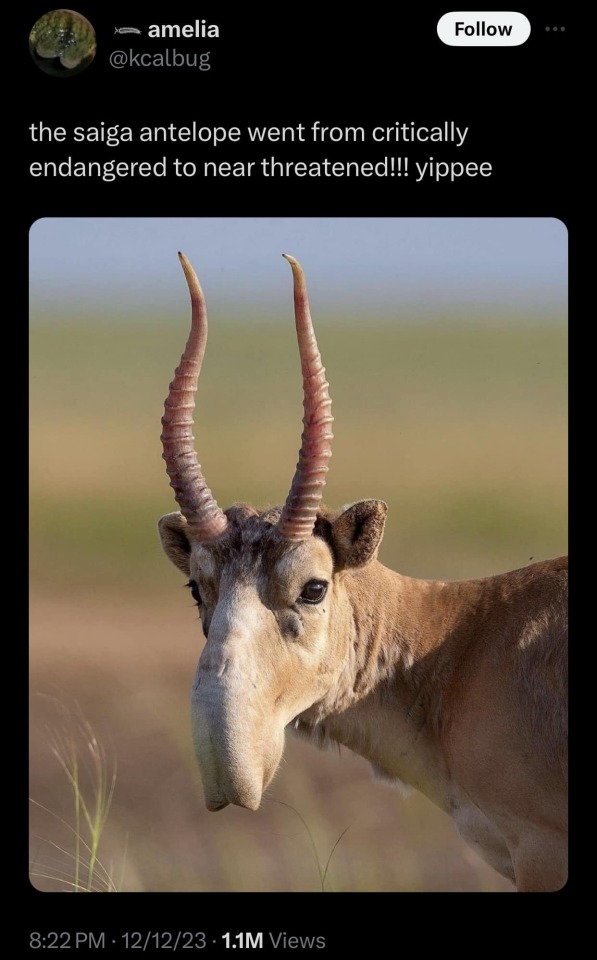
516 notes
·
View notes
Text



Every spring and autumn, rivers of saiga antelope once flowed across the steppes of central Asia. In herds of 200,000 the nomadic animals migrated thousands of miles in search of fresh grass and fairer weather. Dating back to the Ice Age, saiga once roamed from Britain all the way to Canada, alongside woolly rhinos and mammoths. They are even depicted in rock art found in 19,000-year-old caves in Marseille, France. Today, their range has diminished, as disease and poaching caused populations to collapse. The majority live in Kazakhstan, with smaller populations in Uzbekistan and Russia. Another isolated population lives in Mongolia. But recent conservation efforts by organizations like the Altyn Dala Conservation Initiative are helping saiga numbers rebound, and so this Ice Age antelope continues to roam the vast grasslands of central Asia...
Read more:
In photos: saiga populations bounce back | CNN
360 notes
·
View notes
Text
youtube
Meet the Saiga Antelope: Nature's Marvel
Discover the extraordinary Saiga Antelope! Its unique nose and migratory habits make it a true wonder of the wild. Learn more about its fascinating life!
Check out my other videos here: Animal Kingdom Animal Facts Animal Education
#Helpful Tips#Wild Wow Facts#Saiga Antelope#Wildlife Documentary#Nature's Marvel#Endangered Species#Wildlife Conservation#Animal Facts#Saiga Conservation#Wildlife Protection#Rare Animals#Unique Animals#Nature Documentary#Animal Behavior#Wildlife Habitat#Endangered Wildlife#Animal Adaptations#Saiga Antelope Facts#Animal Kingdom#Wildlife Awareness#Conservation Efforts#Nature Lovers#Biodiversity#Wildlife Photography#Animal Documentary#Saiga Antelope Conservation#Animal World#youtube#fun animal facts#animal science
0 notes
Text
I CAVALLI SELVATICI TORNANO NELLE STEPPE DEL KAZAKISTAN
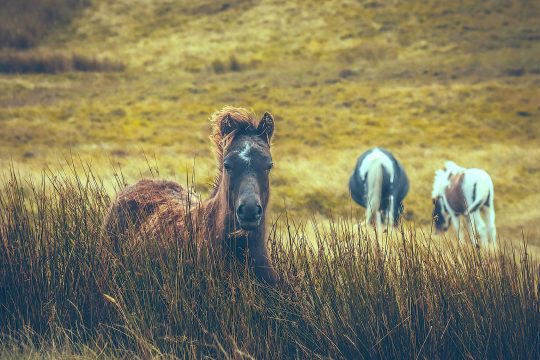
Sette cavalli di Przewalski, noti anche come cavalli selvatici mongoli o takhi, sono stati reintrodotti nella steppa del Kazakistan, dove mancavano da almeno due secoli. Si tratta di un gruppo di sei giumente ed uno stallone, provenienti dagli zoo di Berlino e di Praga. Questa reintroduzione è considerata un evento storico per la biodiversità, i cavalli di Przewalski sono infatti geneticamente distinti dai cavalli domestici, avendo una coppia di cromosomi in più rispetto ai cavalli comuni. Questi esemplari sono considerati gli ultimi cavalli veramente selvatici rimasti, nonostante alcune ricerche suggeriscano che potrebbero essere stati addomesticati migliaia di anni fa e che si siano successivamente inselvatichiti. Verranno monitorati per un anno in una riserva di 80 ettari per assicurarsi che si adattino al nuovo ambiente e alla convivenza reciproca. Durante questo periodo saranno sotto la sorveglianza da parte di un team di esperti che valuterà la loro capacità di resistere al clima rigido e di procurarsi il cibo autonomamente. Successivamente saranno rilasciati in natura.
La reintroduzione fa parte di un ampio progetto di conservazione della fauna locale portato avanti dall’Altyn Dala Conservation Initiative, una partnership tra ONG nazionali e internazionali e il governo del Kazakistan, impegnata a salvaguardare e ripristinare i diversi ecosistemi del Paese. I cavalli di Przewalski, insieme all’asino selvatico e all’antilope Saiga anch’essi reintrodotti in natura tramite progetti di conservazione, aiuteranno a mantenere la biodiversità fertilizzando il terreno con il loro sterco e disperdendo i semi delle piante, contribuendo così a rendere il territorio più resistente alla desertificazione e agli incendi.
___________________
Fonte: Zoopraha; foto di Pexels

VERIFICATO ALLA FONTE | Guarda il protocollo di Fact checking delle notizie di Mezzopieno
BUONE NOTIZIE CAMBIANO IL MONDO | Firma la petizione per avere più informazione positiva in giornali e telegiornali

Se trovi utile il nostro lavoro e credi nel principio del giornalismo costruttivo non-profit | sostieni Mezzopieno
15 notes
·
View notes
Text
The Top Ten Strangest Animals You've Never Heard Of

The Top Ten Strangest Animals You've Never Heard Of In a world brimming with charismatic megafauna and familiar creatures, there exists a realm of animals that defy convention and expectations. These oddities, often tucked away in remote corners of the globe, offer a glimpse into the incredible diversity of life on Earth. Get ready to embark on a journey through the lesser-known, the peculiar, and the downright strange as we uncover the top ten strangest animals you've probably never heard of. 1. The Aye-Aye: Madagascar's Enigmatic Nocturnal Creature
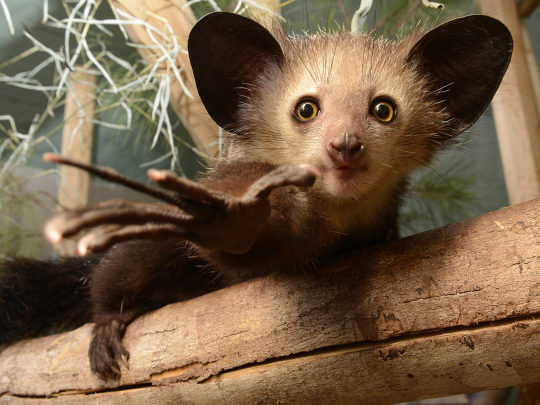
The Aye-Aye: Madagascar's Enigmatic Nocturnal Creature Our exploration begins in Madagascar, where the mysterious aye-aye lurks in the darkness. This rare primate sports a unique feature that sets it apart: an elongated skeletal finger. This finger acts as a specialized tool for extracting insects from tree bark. Imagine a creature that taps on wood, listens for echoes, and then employs its extraordinary finger to snag a hidden meal. The aye-aye's unusual appearance and nocturnal behavior make it a true enigma of the animal kingdom. 2. The Star-Nosed Mole: A Master of Sensory Perception
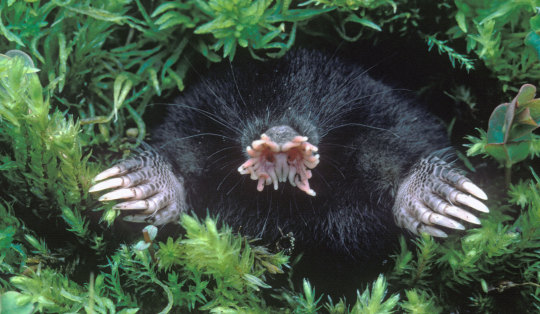
The Star-Nosed Mole Venturing closer to home, we encounter the star-nosed mole, a small mammal that showcases the marvels of sensory adaptation. With its peculiar nose resembling a star-shaped appendage, this mole has an exceptional sense of touch. Its sensitive nasal tentacles are covered in thousands of tiny touch receptors, allowing it to navigate in the dark and locate prey beneath the soil. But what truly baffles scientists is its underwater hunting prowess, using these unique adaptations to sense and catch prey in a flash. 3. The Pink Fairy Armadillo: A Tiny Desert Digger
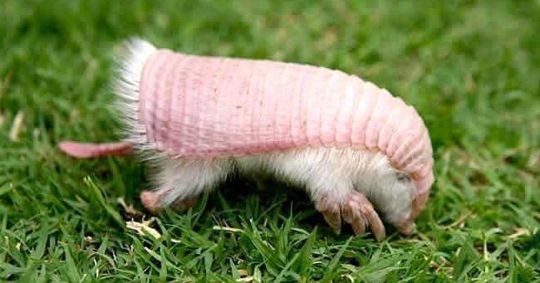
The Pink Fairy Armadillo From the deserts of Argentina emerges the pink fairy armadillo, a creature as adorable as it is bizarre. Its pale pink armor and small size make it look more like a fairy tale character than a real animal. This tiny armadillo possesses an uncanny ability to dig through sand with remarkable efficiency, disappearing into the ground as if by magic. Its specialized adaptations to the desert environment reflect the wonders of evolution in even the most challenging habitats. 4. The Yeti Crab: Deep-Sea Oddity with Furry Arms
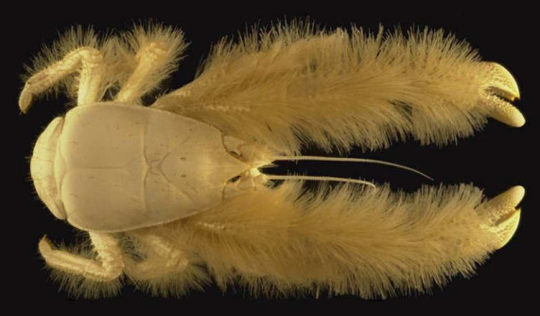
The Yeti Crab Journeying to the depths of the ocean, we encounter the yeti crab, an otherworldly crustacean found near hydrothermal vents. Named after the mythical Yeti due to its furry appearance, this crab's arms are covered in hair-like structures that host symbiotic bacteria. These bacteria are believed to play a vital role in the crab's nutrition by converting chemicals from the vents into usable energy. The yeti crab's unique adaptation to its extreme habitat highlights the diversity of life thriving in the darkness of the deep sea. 5. The Saiga Antelope: Ancient Nosed Wanderer

The Saiga Antelope Hailing from the vast grasslands of Central Asia, the saiga antelope roams with an unmistakable feature: an elongated, trunk-like nose. This nose, which resembles an ancient relic from another era, is thought to aid in filtering dust and cooling in the scorching summers. Unfortunately, this charismatic creature faces challenges due to habitat loss and poaching for its valuable horns. The saiga antelope's distinctive appearance and plight underscore the delicate balance between human impact and wildlife conservation. 6. The Shoebill: The Prehistoric Bird of the Swamps

The Shoebill Africa's swamps harbor a creature that seems to have stepped out of a prehistoric landscape—the shoebill. With its massive, shoe-shaped bill, this bird commands attention and intrigue. It patiently waits in the marshes, ready to strike at prey with lightning speed. The shoebill's ancient appearance and unique hunting behavior have earned it a place of reverence in local African folklore, solidifying its status as a captivating avian oddity. 7. The Axolotl: The Eternal Larva of Mexican Waters
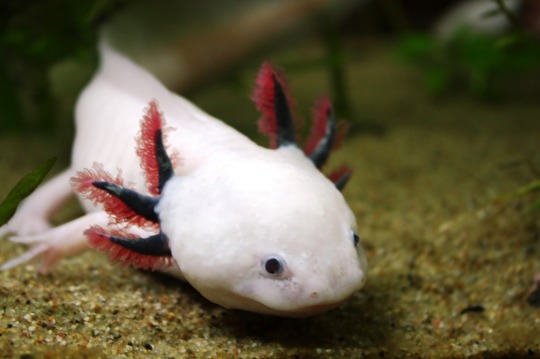
The Axolotl In the aquatic realm of Mexico's Xochimilco canals, the axolotl reigns supreme. This critically endangered amphibian is unlike any other, retaining its juvenile features throughout its life—a phenomenon known as neoteny. What truly makes the axolotl remarkable is its regenerative abilities. It can regrow entire limbs, spinal cord, and even parts of its heart. Scientists are investigating these abilities for potential medical applications, highlighting the intersection between biology and human health. 8. The Okapi: The Elusive Forest Giraffe

The Okapi Venturing into the depths of the Congo rainforest, we encounter the okapi, a creature that defies classification. With the body of a horse, legs of a zebra, and a head resembling a giraffe, the okapi is a unique mosaic of features. Its elusive nature, reclusive behavior, and distinct appearance have earned it the nickname "forest giraffe." Despite its rarity, the okapi holds cultural significance for the indigenous people of its habitat, adding layers of mystery to its already intriguing persona. 9. The Naked Mole Rat: Underground Social Oddity
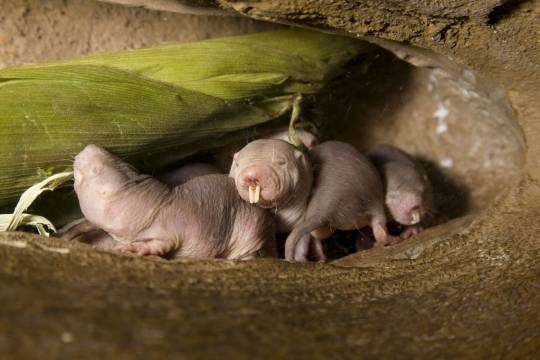
The Naked Mole Rat Beneath the surface of East Africa's arid landscapes, the naked mole rat constructs a subterranean kingdom. These rodents exhibit an astonishing level of social organization, with a single reproductive queen and a cooperative colony structure. Moreover, they display remarkable resistance to cancer—a trait that continues to intrigue scientists. The naked mole rat's unique biology and social dynamics provide valuable insights into the complexity of animal societies and the mysteries of aging. 10. The Blobfish: Deep-Sea Enigma

The Blobfish Our journey takes us to the abyssal depths, where the blobfish resides—a gelatinous creature that appears quite different out of its natural habitat. Its formless, gelatinous appearance is a result of adaptations to the extreme pressures of the deep sea. Despite its less-than-flattering appearance, the blobfish's peculiar adaptation to its environment serves as a reminder of the astonishing variety of life that thrives in Earth's most extreme ecosystems. Conclusion In a world brimming with diversity, these ten animals stand out as reminders of the boundless creativity of nature. Their strange appearances, unique adaptations, and captivating behaviors shed light on the wonders that remain hidden within the natural world. As we uncover the mysteries of these lesser-known creatures, we gain a deeper appreciation for the complexity and beauty of life on our planet, reminding us that there are always more surprises waiting to be discovered. #StrangeAnimalDiscoveries, #UnheardOfCreatures, #BizarreBeasties, #MysticalCritters, #HiddenOddities The Ten Best Camping Sites for Families and Their Pets 2023 #UnusualAnimals, #HiddenWonders, #Nature'sOddities, #CuriousCreatures, #BizarreBeauties Read the full article
2 notes
·
View notes
Text
0 notes
Text
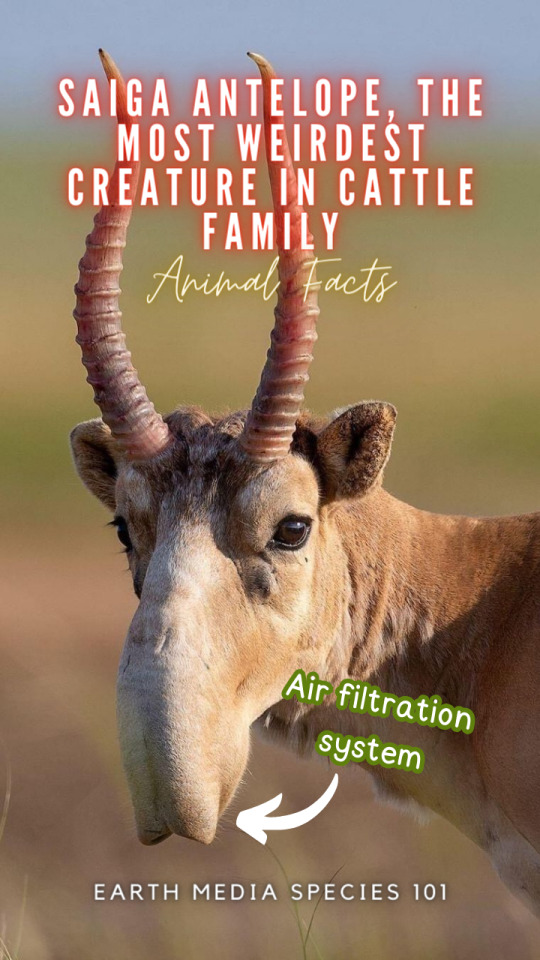
The saiga antelope, scientifically known as Saiga tatarica, is a unique and endangered species native to the vast steppes and semi-arid regions of Central Asia, particularly in Russia and Kazakhstan. Known for its distinctive appearance, the saiga possesses a distinctive bulbous nose, which helps filter and cool the air in the extreme temperatures of its habitat. These herbivorous creatures primarily graze on a variety of steppe grasses and play a crucial role in maintaining the ecosystem's balance. Unfortunately, saiga antelopes have faced significant population declines in recent years due to habitat loss and poaching for their horns, which are highly valued in traditional medicine. Conservation efforts are underway to protect and preserve these remarkable animals and their unique habitat.
0 notes
Link
The population of a rare type of antelope has more than doubled since 2019, in a remarkable turn around in fortunes.
According to the first aerial survey in two years, the number of saiga in their Kazakhstan heartland has risen from 334,000 to 842,000.
There were fears the animal was on the brink of extinction following a mass die-off in 2015.
Distressing images of carcasses strewn over the steppes made world headlines.
Continue Reading.
2K notes
·
View notes